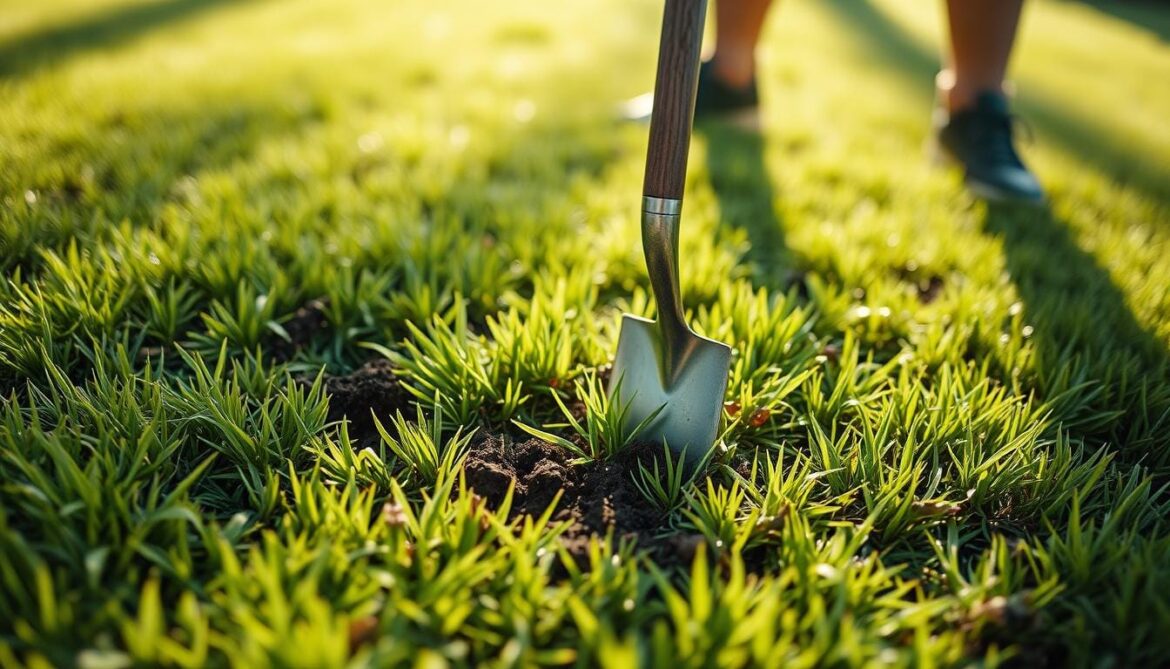Dealing with invasive Bermuda grass can be a frustrating experience for homeowners who value their grass lawns. This type of grass is notorious for its aggressive growth and resilience, making it challenging to eradicate without harming the surrounding vegetation.
The key to successfully removing Bermuda grass lies in understanding its biology and growth patterns. With the right method, you can eliminate this invasive species and preserve your desired grass. In this comprehensive guide, we’ll explore effective techniques for getting rid of Bermuda grass while protecting your lawn.
Key Takeaways
- Understand the biology of Bermuda grass to effectively remove it.
- Identify the right method for removing Bermuda grass based on your lawn size and infestation level.
- Learn how to target Bermuda grass without harming surrounding vegetation.
- Discover natural and chemical approaches to removing Bermuda grass.
- Implement long-term management strategies to prevent reinfestation.
Understanding Bermuda Grass and Its Invasive Nature
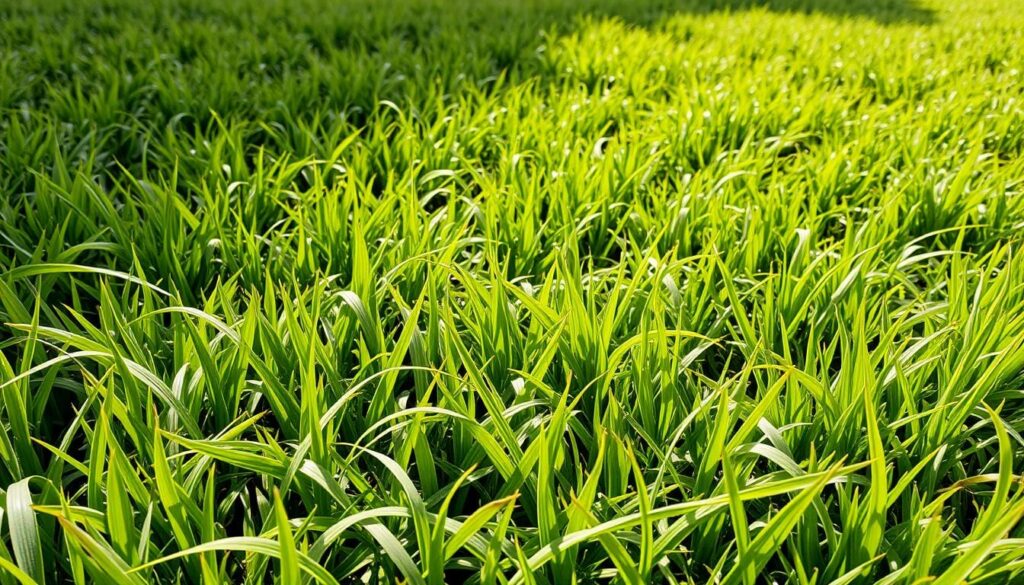
Understanding the invasive nature of Bermuda grass is crucial for developing effective strategies to control its spread. This grass is notorious for its ability to invade and dominate lawns, gardens, and other areas, making it a significant challenge for homeowners and gardeners.
What Makes Bermuda Grass So Persistent
Bermuda grass owes its persistence to its unique biological characteristics. It has a robust root system and can regenerate from small fragments of stems and roots. This ability makes it particularly resilient to removal efforts.
- It can survive adverse conditions by storing energy reserves in its underground structures.
- The grass can quickly regrow when conditions improve, making it a formidable opponent in lawn care.
How Bermuda Grass Spreads Through Rhizomes and Stolons
Bermuda grass employs a dual strategy for spreading through both above-ground stolons and below-ground rhizomes. The stolons are light green, vine-like stems that grow along the soil surface, creating a network across your yard. At nodes along these stolons, new roots develop, establishing new plants that can become independent.
Below the surface, white rhizomes form an extensive underground network, extending far beyond the visible grass areas. When rhizomes are damaged during removal attempts, each fragment can develop into a new plant, complicating eradication efforts.
This dual spreading mechanism allows Bermuda grass to quickly colonize new areas, making it difficult to contain within desired boundaries.
How to Identify Bermuda Grass in Your Lawn
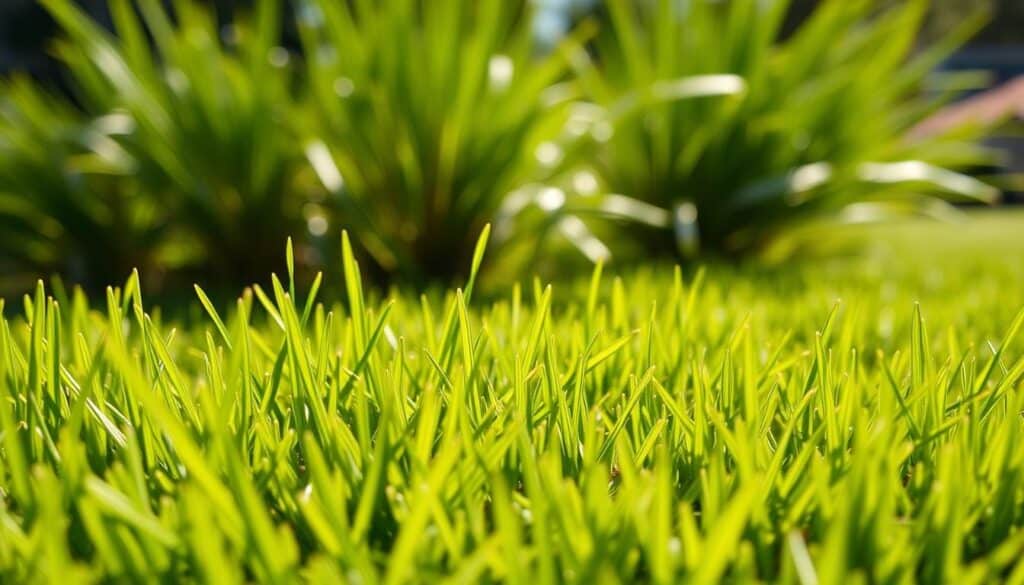
Recognizing Bermuda grass is vital for homeowners who wish to eradicate it without damaging their lawn. The first step in managing this invasive species is understanding its characteristics and growth patterns.
Physical Characteristics of Bermuda Grass
Bermuda grass has distinct physical features that can help in its identification. It thrives in full sun and is not shade-tolerant, often appearing thin or disappearing under trees and in structural shade. The grass is known for its resilience, particularly during drought conditions when other grass types turn brown. Its ability to maintain a greenish hue during summer droughts is a key identifying feature.
- It grows rapidly, especially during peak summer months.
- Bermuda grass is characterized by its wiry texture and coarse blades.
- It forms dense mats due to its extensive stolon and rhizome system.
Seasonal Behavior and Growth Patterns
Bermuda grass exhibits distinct seasonal growth patterns. As a warm-season grass, it grows most vigorously during the hot summer months when temperatures consistently exceed 75°F. During this time, it can spread rapidly, growing as much as 6 inches per week in ideal conditions. In contrast, during the winter, Bermuda grass turns brown and enters dormancy when temperatures drop below 55°F, creating a stark contrast with cool-season grasses that remain green.
- In spring, Bermuda grass is typically slower to green up than cool-season grasses.
- It responds quickly to irrigation and fertilization, often outgrowing surrounding grass types.
- The grass’s drought tolerance allows it to maintain its color longer than other grass types during dry spells.
Preparing for Bermuda Grass Removal
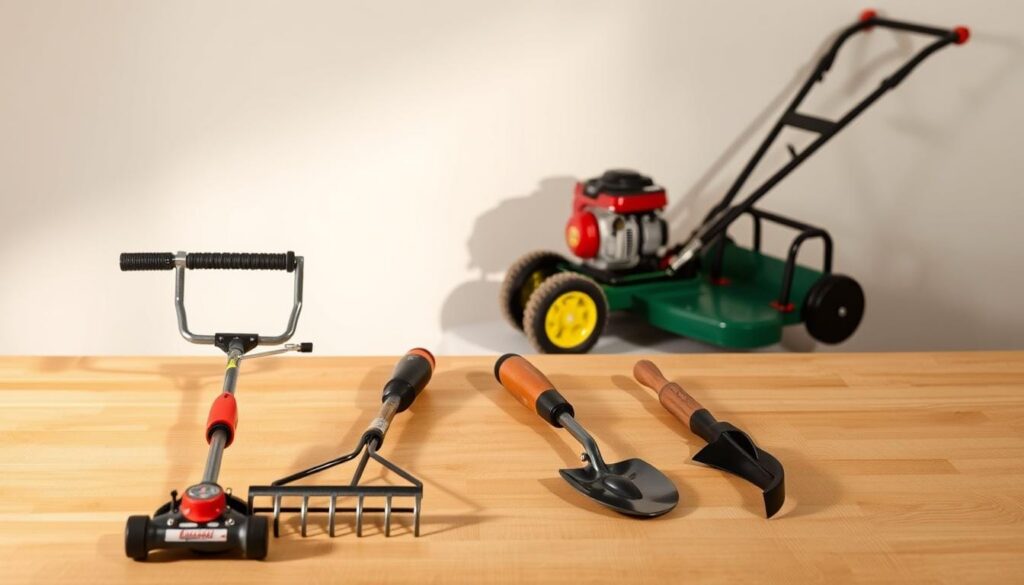
Effective Bermuda grass removal starts with proper preparation, including choosing the right time and gathering essential tools. This preparation is crucial for a successful removal process that minimizes the chance of regrowth.
Best Time of Year to Remove Bermuda Grass
The best time to remove Bermuda grass is during its active growth phase, typically in late spring or early summer. During this period, the grass is more vulnerable to removal methods. Removing Bermuda grass at this time allows for more effective eradication because the grass is actively growing and can be more easily accessed.
It’s also essential to consider the weather; removal is most effective during dry spells when the soil is not too moist, making it easier to handle the roots.
Tools and Materials You’ll Need
Gathering the right tools is vital for efficient Bermuda grass removal. For manual removal, a garden fork is preferred over a shovel as it loosens the soil around the rhizomes without chopping them into regrowable fragments.
- A hand trowel for precision work around valuable plants.
- Heavy-duty gardening gloves for protection and grip.
- A sod cutter for larger areas to remove the top layer containing most of the Bermuda grass.
- Clear or black plastic sheeting for solarization methods.
Natural Methods to Get Rid of Bermuda Grass Without Killing Grass
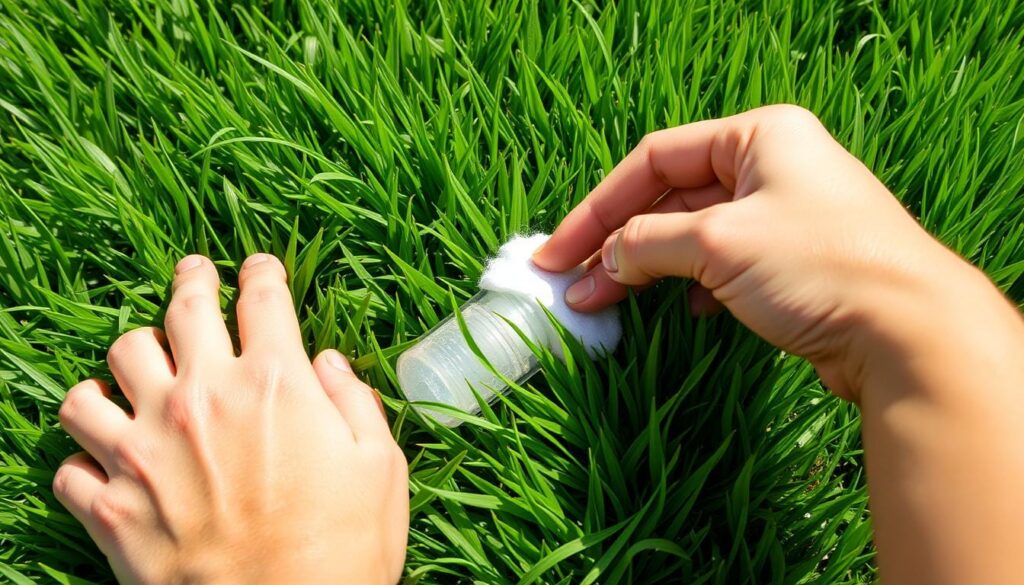
For homeowners looking to eliminate Bermuda grass, several natural approaches can be effective. These methods focus on removing the unwanted grass without causing harm to the rest of your lawn.
The Water and Fertilizer Deprivation Method
Depriving Bermuda grass of water and fertilizer is a natural method to weaken and eventually eliminate it. By withholding water and nutrients, you create an environment where your desired grass species can outcompete the Bermuda grass. This method requires patience as it may take some time to see results.
Soil Solarization Technique
Soil solarization involves trapping the sun’s heat under a clear plastic tarp to kill weeds and their seeds. To apply this method, moisten the soil, lay down the tarp, and weigh down its edges. Leave it in place for several weeks during the hottest part of the year to effectively kill Bermuda grass roots.
Sheet Mulching Approach
Sheet mulching is another effective technique for eliminating Bermuda grass. This involves layering cardboard, mulch, and other materials to suppress weed growth. By applying a thick layer of mulch and cardboard over the affected area, you can starve the Bermuda grass of light and nutrients, eventually killing it.
Vinegar and Boiling Water Applications
Using vinegar and boiling water are household methods for controlling Bermuda grass. A 10% vinegar solution can effectively kill weeds, but be cautious as it’s non-selective and can harm your lawn. Boiling water can also be used to kill Bermuda grass by pouring it directly on the plants. Care must be taken to avoid spraying or pouring these substances on desirable plants.
These natural methods offer alternatives to chemical herbicides for controlling Bermuda grass. While they may require more time and effort, they are safer for the environment and your lawn.
Chemical Control Options for Selective Bermuda Grass Removal
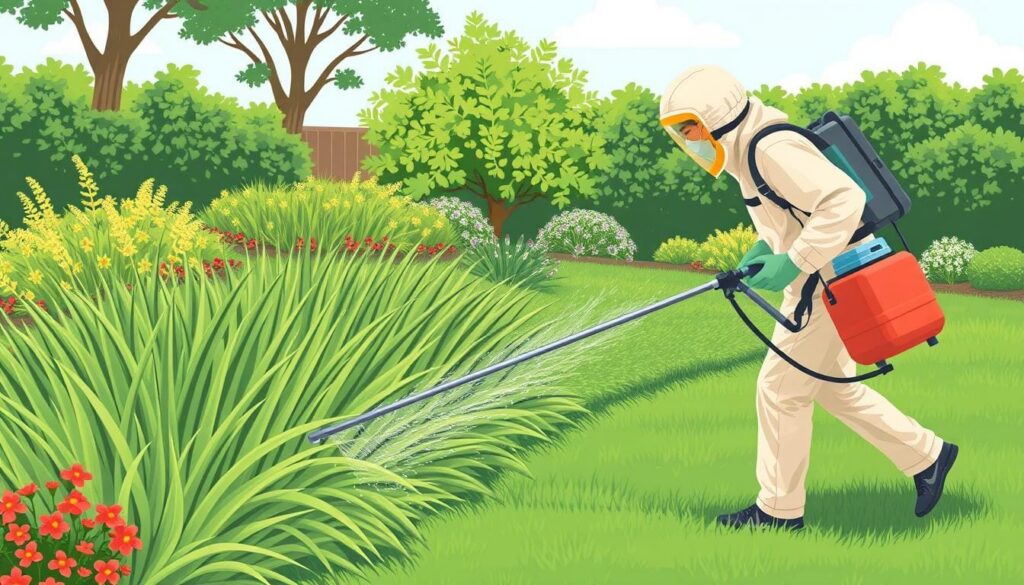
Bermuda grass can be a nuisance, but with the right chemical control methods, it’s possible to remove it without damaging your lawn. Effective eradication involves using herbicides, but it’s crucial to choose the right type and apply it correctly to avoid harming other grasses.
Grass-Selective Herbicides That Spare Other Lawn Grasses
Selective herbicides are designed to target specific weeds while leaving other grasses unharmed. For Bermuda grass, grass-selective herbicides are available, although their effectiveness can vary. It’s essential to read and follow the manufacturer’s instructions to ensure both effectiveness and safety.
Glyphosate is a non-selective herbicide that can eradicate Bermuda grass but will also kill other vegetation it comes into contact with. Therefore, its application requires careful consideration and precision.
Proper Application Techniques and Safety Precautions
When using herbicides, proper application techniques and safety precautions are paramount. Always wear protective gear, including long sleeves, long pants, closed-toe shoes, chemical-resistant gloves, and eye protection. Apply herbicides on calm days to prevent drift, and use a sprayer with a shield or directed nozzle to minimize contact with desirable plants.
- Calibrate your sprayer to ensure the correct amount of product is applied.
- Time applications for early morning or late afternoon.
- Avoid applying herbicides before rain is forecast.
- Keep children and pets off treated areas until the application has dried.
- Store herbicides in their original containers and dispose of empty containers according to local regulations.
The Fork-and-Pull Method: Physical Removal Techniques
The fork-and-pull technique is a straightforward, chemical-free approach to eliminating unwanted Bermuda grass from your yard. This method involves manually removing the grass, including its extensive root system, to prevent regrowth.
Step-by-Step Guide to Manual Bermuda Grass Removal
To successfully remove Bermuda grass, start by visually tracing the stolons (above-ground runners) to their full extent before beginning extraction. This is crucial because stolons can travel several feet from the main plant. Use a small hand trowel or your fingers to carefully expose and follow rhizomes underground, ensuring you capture their entire length.
- Work when soil moisture is optimal—neither too wet nor too dry—to maintain soil cohesion around the root system during extraction.
- When you encounter a node or junction where rhizomes branch, take extra care to extract all connected segments rather than breaking them off.
- Consider using a garden sieve for valuable soil, sifting it to capture even small rhizome fragments that might otherwise be overlooked.
After carefully extracting the Bermuda grass, including its rhizomes and stolons, place the removed material into a wheelbarrow. It’s a slow and systematic process that requires patience to avoid breaking the stems, which can lead to regrowth.
Tips for Complete Rhizome and Stolon Extraction
Complete extraction of rhizomes and stolons is key to successful manual removal of Bermuda grass without regrowth. Pay special attention to border areas where Bermuda grass meets hardscapes like sidewalks or driveways, as rhizomes often accumulate along these edges.
| Area of Focus | Technique | Benefit |
|---|---|---|
| Border Areas | Careful digging and extraction | Prevents regrowth from missed fragments |
| Soil with Valuable Plants | Sifting soil to remove fragments | Ensures complete removal without damaging plants |
| Nodes and Junctions | Gentle extraction to avoid breakage | Reduces likelihood of regrowth |
After initial removal, return to the area weekly to check for and immediately remove any emerging sprouts from missed rhizome fragments. For particularly valuable plants that have been infiltrated by Bermuda grass, consider carefully washing their root balls to remove all Bermuda grass material before replanting.
Long-Term Management and Prevention Strategies
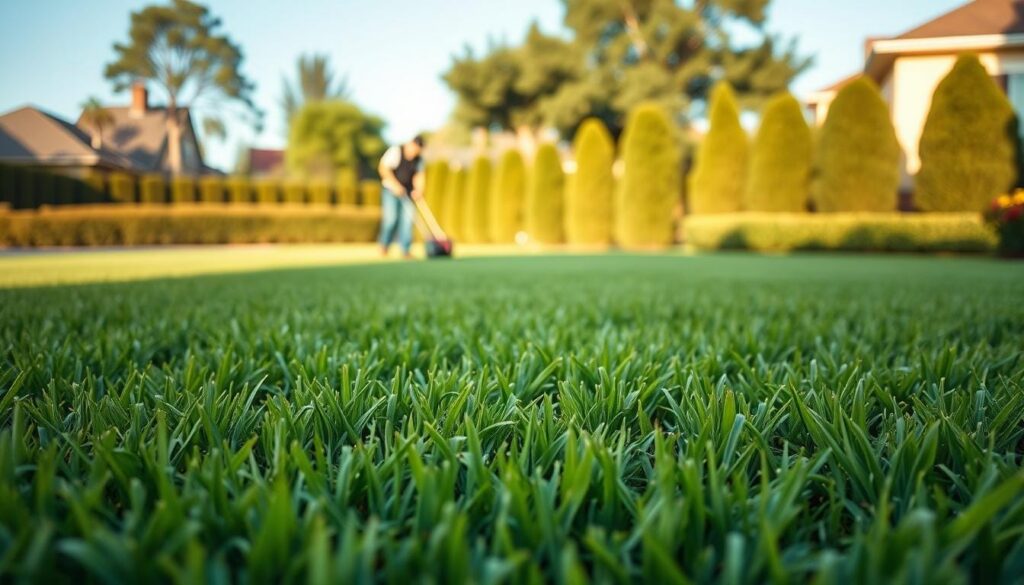
Effective long-term management of Bermuda grass requires a combination of proper lawn maintenance and strategic prevention techniques. To maintain a healthy lawn and prevent Bermuda grass from becoming invasive, it’s crucial to adopt a proactive approach.
Lawn Maintenance Practices That Discourage Bermuda Grass
Regular lawn maintenance is key to discouraging Bermuda grass. Edge and weed-eat regularly to keep Bermuda grass confined to the lawn and out of garden beds. Maintaining a healthy, dense lawn through proper mowing, fertilization, and irrigation practices can also make it less hospitable to Bermuda grass invasion. It’s also important to inspect any new plants or materials brought into your yard for signs of Bermuda grass before introducing them to your lawn or garden.
Creating Barriers and Boundaries to Prevent Spread
Creating physical barriers is essential for preventing Bermuda grass from spreading into other areas of your yard. Install deep edging barriers that extend at least 6-8 inches below the soil surface to block underground rhizome spread. Materials like metal, plastic, or concrete edging are effective because they create a complete barrier without gaps. Regularly trimming along boundaries and creating buffer zones of mulch or gravel can also help. For added protection, consider using landscape fabric under mulch in garden beds or implementing raised beds with solid sides in areas with high Bermuda grass pressure.
Common Mistakes to Avoid When Removing Bermuda Grass
Many homeowners struggle with Bermuda grass removal due to avoidable errors. Removing Bermuda grass is a challenging task that requires careful planning and execution to avoid common mistakes that can lead to incomplete removal or damage to the surrounding lawn.
Why Rototilling Makes the Problem Worse
Rototilling is often considered as a method to remove Bermuda grass, but it can actually exacerbate the problem. By breaking up the rhizomes and stolons, rototilling can spread the grass, making it harder to eradicate. This method can turn a manageable problem into a widespread infestation.
The Importance of Complete Removal and Vigilance
Complete removal of Bermuda grass is crucial to prevent regrowth. This involves not just removing the visible grass but also ensuring that all rhizomes and stolons are eliminated. Ongoing vigilance is necessary to catch any new growth early. Regular monitoring and immediate action when new growth appears are key to successful Bermuda grass control.
| Mistake | Consequence |
|---|---|
| Rototilling | Spreads Bermuda grass by breaking up rhizomes and stolons |
| Incomplete Removal | Allows regrowth, undoing removal efforts |
| Lack of Vigilance | Fails to catch new growth early, leading to re-infestation |
The process of removing Bermuda grass takes time and requires patience. By avoiding common mistakes and being committed to complete removal and ongoing vigilance, homeowners can successfully rid their lawns of Bermuda grass without damaging other grasses.
Conclusion: Winning the Battle Against Bermuda Grass
The battle against Bermuda grass is ongoing, but success is achievable with persistence and the right techniques. Eradicating Bermuda grass without harming desirable grass requires a strategic, persistent approach combining multiple methods.
It’s essential to recognize that Bermuda grass control is typically a long-term project that may take months or even years to fully accomplish. The most successful approach often combines initial intensive removal followed by consistent monitoring and maintenance practices.
After successful removal, implement preventive measures including proper mowing height, strategic watering, and physical barriers to prevent reinfestation. With persistence, the right techniques, and ongoing vigilance, you can successfully reclaim your lawn from invasive grass while preserving the grass varieties you want to keep.
For a sustained plan, consider consulting with grass experts who can provide professional assistance and recommendations to achieve success over time.
